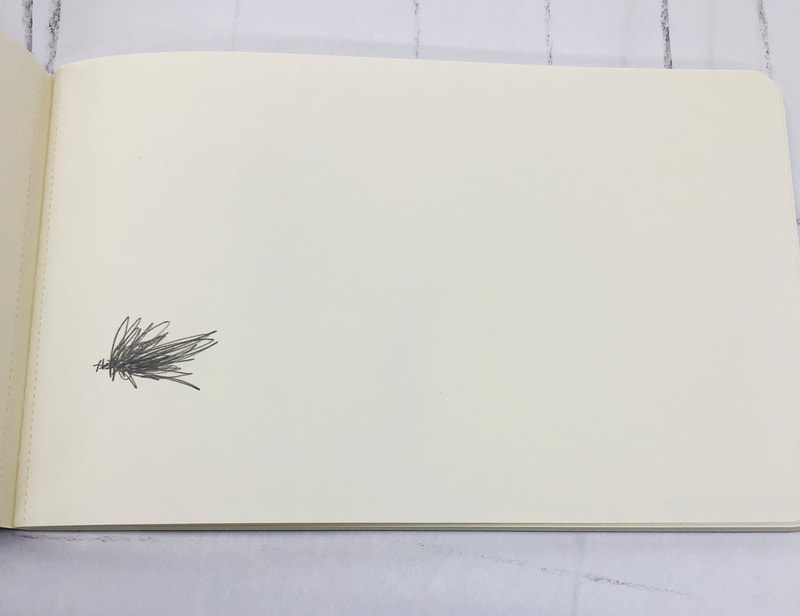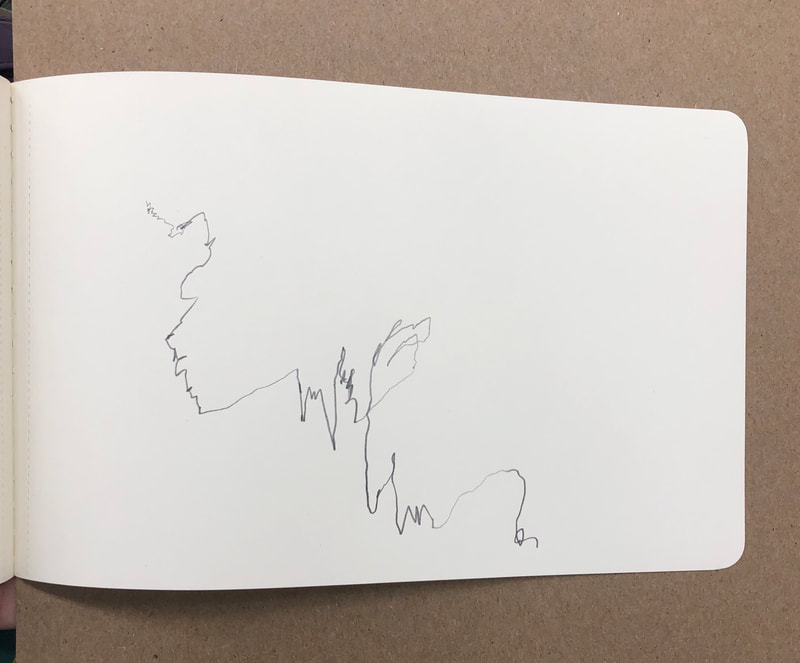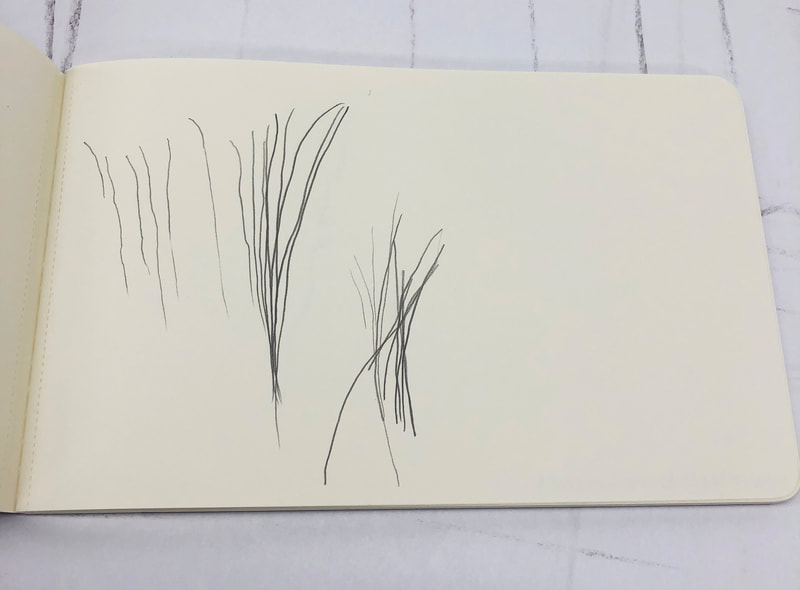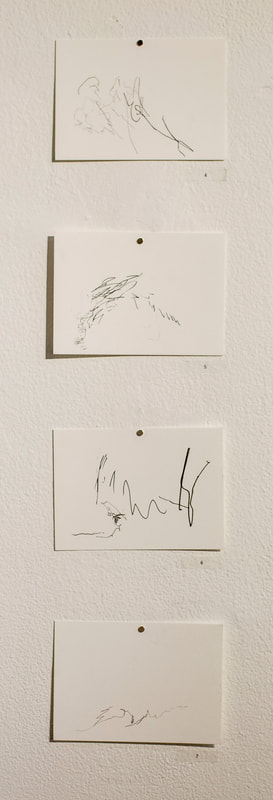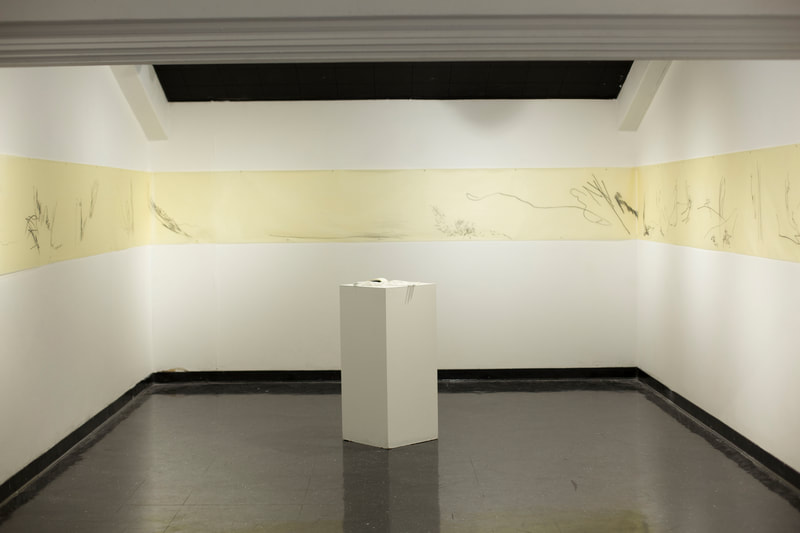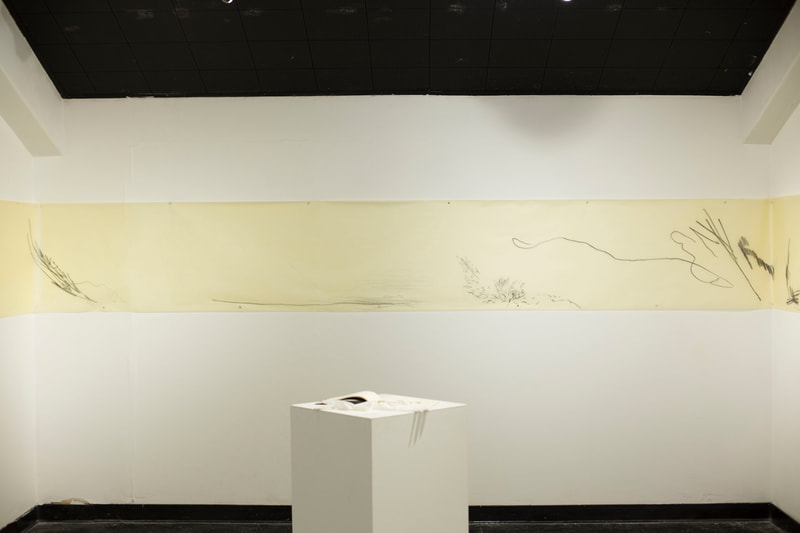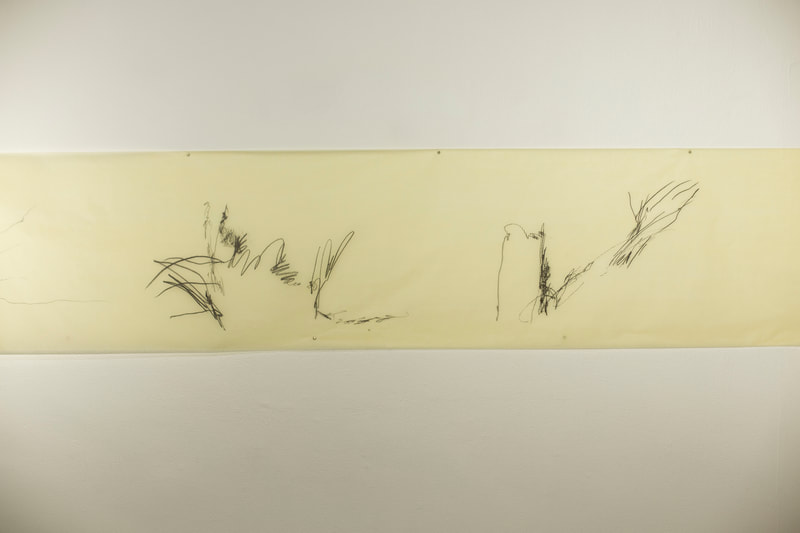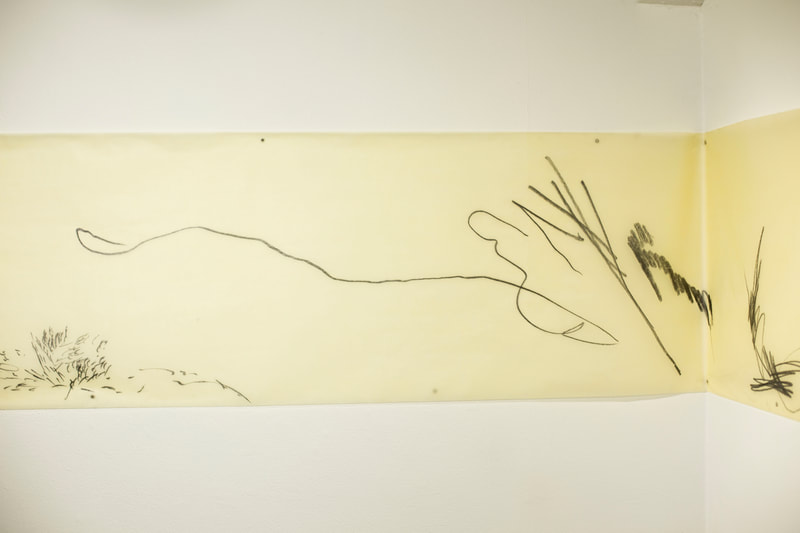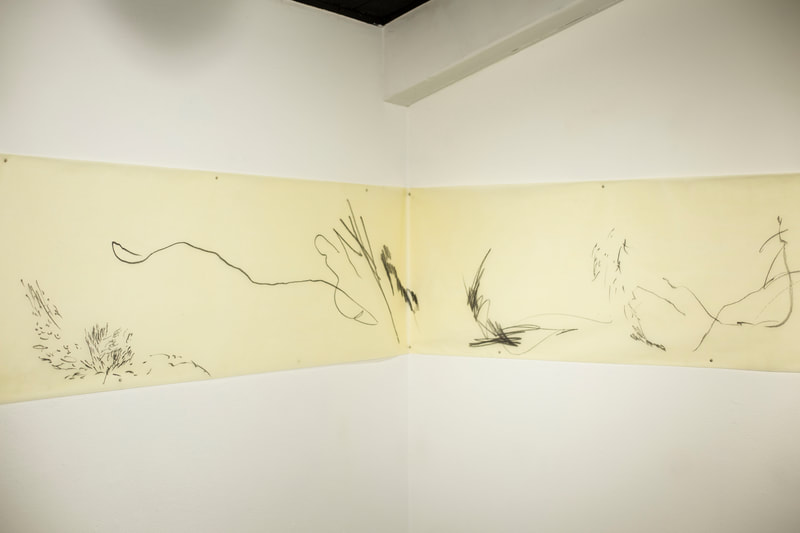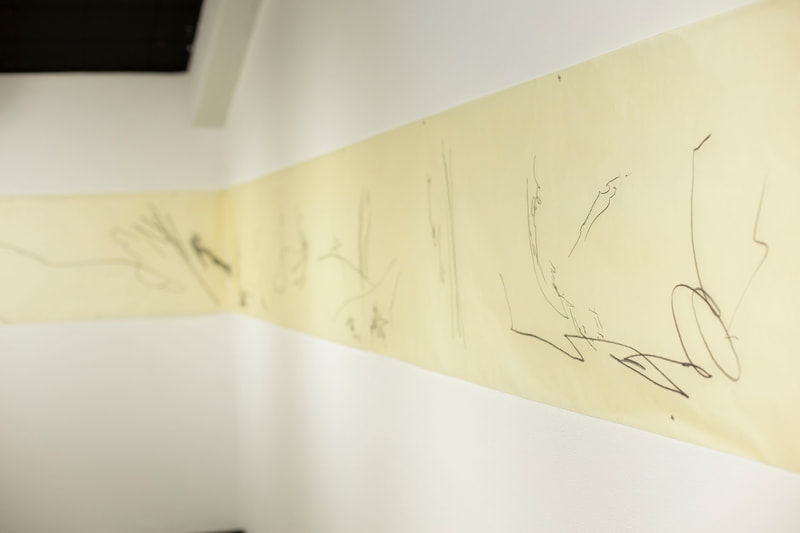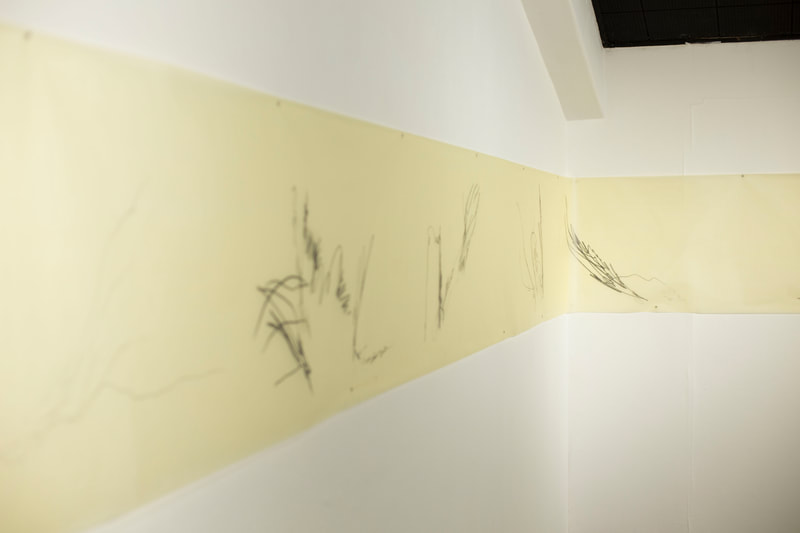Psysmograph
|
I documented my feelings in a journal using expressive line markings instead of words, letting my hand move as it wanted. I categorized each entry with the date and a word or two describing the mood I was in. I expanded these line drawings to a larger scale and later worked on a scroll.
In displaying this for the Psysmograph Show (2019), I wanted to surround the viewer with my emotions. I wanted the viewer to enter my brain when they entered the space. At the center was my diary of lines, the document that started it all. You had to enter the room and spend time, intimate time with my raw feelings in zig-zag scribbles. Then you had to look up and see the continuous rantings of my hand on a larger scale. |
All content © Michelle Drummy 2019 unless otherwise specified.
